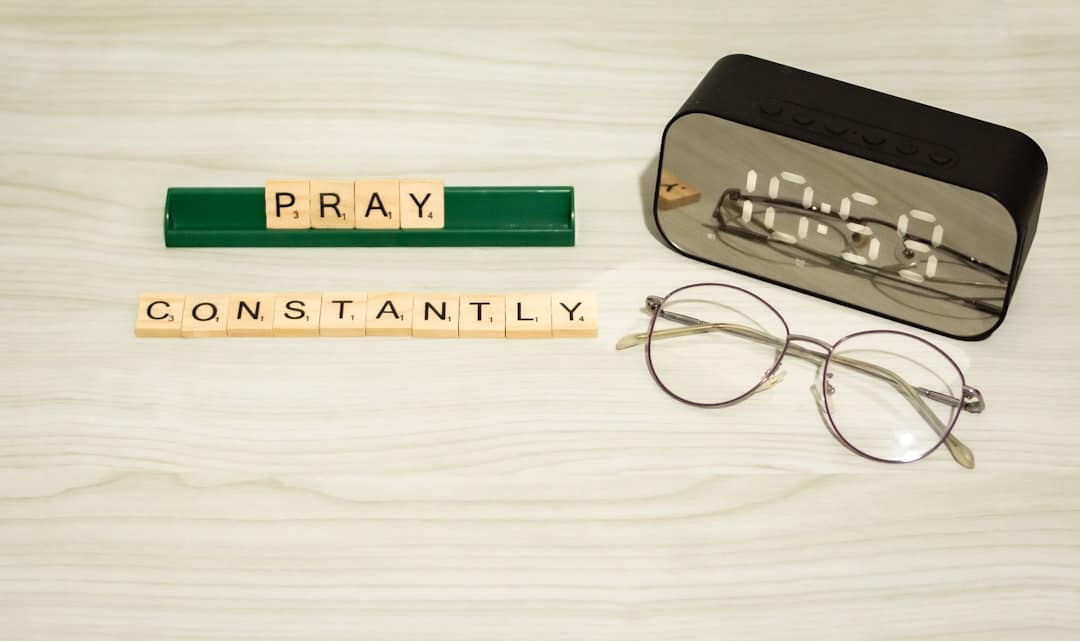Every sunrise ushers in a fresh opportunity to stand on the side of light and to ask for divine shelter from anything that seeks to steal our peace, wound our bodies, or cloud our spirits. A powerful daily prayer for protection from harm and evil is not a superstitious ritual; it is an intentional alignment of heart, mind, and voice with the highest source of safety available to humanity. Whether whispered in a bedroom, repeated silently on a commuter train, or sung aloud in a house of worship, this prayer becomes an anchor that keeps us from drifting into fear and a shield that diminishes the reach of malevolent forces.
Understanding Daily Protective Prayer
The Spiritual Foundation of Protection
Across cultures and faith traditions, prayers of protection are rooted in the belief that unseen benevolent powers can intervene when human limits are reached. From the Psalm 91 in the Judeo-Christian canon to the Ayat al-Kursi in Islam, from Hindu Gayatri Mantra recitations to indigenous smudging ceremonies, the essence is the same: invoking a higher authority to place a hedge of safety around the believer.
Evil and Harm in a Modern Context
Evil is not always cinematic demons or grotesque monsters. In the modern world, harm and evil often appear as:
- Emotional toxicity—gossip, manipulation, gaslighting.
- Physical threats—violence, accidents, illness.
- Digital dangers—cyber-bullying, identity theft, pornography addiction.
- Spiritual oppression—persistent doubt, despair, or intrusive thoughts.
A daily protective prayer addresses all these dimensions, asking for wisdom to avoid danger, resilience to endure unavoidable trials, and grace to disarm any evil that slips past human defenses.
Key Components of a Powerful Daily Prayer for Protection
1. Addressing the Divine Source
Begin by naming the divine presence with reverence. Examples include:
- Almighty God, Creator of Heaven and Earth
- Loving Father, Shepherd of my soul
- Holy Spirit, Comforter and Guide
- Allah, the Most Merciful, the Most Compassionate
This step centers the heart and clarifies who is being petitioned.
2. Confession and Cleansing
Before requesting protection, many traditions recommend a brief acknowledgment of shortcomings. This is not self-flagellation but a clearing of spiritual debris that might block receptivity to divine aid. A simple line such as, “Cleanse me from any hidden fault that could give the enemy a foothold,” suffices.
3. Specific Petitions for Protection
Effective prayers are precise yet humble. Instead of vague requests, articulate the spheres you want safeguarded:
- Physical body—protection from accidents, disease, and violence.
- Mind and emotions—guarding against fear, anxiety, intrusive thoughts.
- Relationships—shielding loved ones from harm and deception.
- Workplace or school—asking for discernment and integrity in competitive environments.
- Digital footprint—preserving privacy and moral clarity online.
4. Spiritual Armor Imagery
Many believers visualize armor drawn from sacred texts:
- The belt of truth to resist deception.
- The breastplate of righteousness to guard the heart.
- The shield of faith to quench fiery arrows of accusation.
- The helmet of salvation to secure identity and hope.
- The sword of the Spirit—scriptural truth—to counter lies.
While not every faith uses identical imagery, the principle of intentional mental reinforcement is universal.
5. Declaration of Authority
Assert that no weapon formed against you shall prosper. This is not arrogance but a legal-spiritual stance that evil has no rightful claim over your life.
6. Gratitude and Surrender
Close with gratitude—“Thank You for hearing and answering”—and surrender: “Let Your will be done in my life today.”
Benefits and Importance
Psychological Impact
Neuropsychologists have found that repetitive, faith-based positive affirmations reduce cortisol levels and enhance the prefrontal cortex’s ability to regulate fear. A daily protective prayer functions like a neurological reset button, shifting the nervous system from fight-or-flight to rest-and-digest.
Emotional Resilience
People who pray daily for protection report:
- Lower incidence of panic attacks.
- Greater confidence in unfamiliar situations.
- Faster emotional recovery after trauma.
Relational Harmony
When parents pray over children or spouses pray over one another, the household becomes a shared spiritual ecosystem. Shared prayers reduce blame shifting and foster mutual accountability against toxic influences.
Supernatural Encounters
Many individuals recount stories of narrowly avoided car accidents, inexplicable peace in war zones, or dreams that warned them of danger. While anecdotal, these narratives accumulate into a pattern of evidence suggesting that protective prayer is not placebo but genuine spiritual intervention.
Practical Applications
Morning Routine Integration
Embed the prayer into an existing habit such as brushing teeth or brewing coffee. Example sequence:
- Wake up and drink a glass of water.
- Stand by a window, face the sunrise, and speak the prayer aloud.
- Place one hand over the heart and the other over the stomach to ground the body.
- End with three deep breaths, inhaling peace and exhaling fear.
Family Circle Prayer
Every night, gather the household in a circle. One parent or child can lead a shortened version of the prayer while laying hands on each member’s shoulder. This ritual of belonging becomes a non-negotiable appointment, much like dinner.
Workplace Micro-Prayer
Before opening email or entering a difficult meeting, silently recite a one-sentence adaptation: “Shield my mind from slander, my tongue from gossip, and my heart from discouragement today.” This takes less than ten seconds yet resets intentionality.
Travel and Commuting
Keep a small printed card of the prayer in the car’s sun visor or as a phone lock-screen wallpaper. Red lights become trigger cues for a quick spiritual armor check.
Digital Prayer Prompts
Set smartphone alarms with custom labels such as “Prayer at 10 a.m.”. When the alarm rings, step away from screens for sixty seconds to recite a line of the prayer. These micro-checkpoints build consistency without overwhelming busy schedules.
Sample Daily Protective Prayer (Interfaith Adaptable)
Eternal Source of Light,
I come before You in humility and trust.
Wash me clean of any darkness clinging to my spirit.
Surround my body with Your healing light;
guard my mind with Your perfect peace;
secure my emotions in Your unshakable love.
I place a hedge of fire around [name your family],
and I dispatch angels to every doorway and road I will walk today.
No weapon of accusation, illness, or malice shall prevail.
I carry Your authority as a shield and Your truth as a sword.
Thank You for going before me and staying behind me.
In gratitude I surrender this day—
not my will, but Yours be done.
Amen, Ameen, So be it.
Frequently Asked Questions
What makes a daily protective prayer “powerful” rather than ordinary?
Power does not stem from magical wording but from three converging factors: (1) heartfelt sincerity—the emotional voltage behind the words; (2) scriptural or spiritual authority—aligning the request with promises found in sacred texts; and (3) consistent practice—daily repetition that engrains the prayer into the subconscious, creating a reflex of faith when danger appears.
Can I write my own prayer, or must I use traditional texts?
Authenticity trumps tradition. If you craft a prayer that accurately reflects your beliefs and emotional needs, it is often more effective than reciting ancient words by rote. However, integrating well-tested phrases—such as “The Lord is my shepherd”—adds the weight of centuries of collective faith.
How long should the prayer take to recite?
There is no universal rule. A busy parent might whisper a 20-second version while buckling a toddler into a car seat; a monk might chant for 20 minutes. The pivotal element is undivided attention rather than duration. Research in contemplative neuroscience suggests that 60 to 90 seconds of focused intention can shift brain wave patterns into a protective coherence.
Does praying for protection imply living in fear?
On the contrary, praying against fear is the antidote to fear. A daily protective prayer is proactive, not reactive. Just as locking your front door is prudent rather than paranoid, invoking spiritual protection is an act of wisdom, not cowardice.
What if I don’t feel anything when I pray?
Feelings are unreliable indicators of spiritual efficacy. Cloudy emotions may stem from fatigue, stress, or even spiritual resistance. Continue the practice; consistency trains the soul much like physical exercise trains muscles. Over time, subtle shifts—such as increased calm or unexpected solutions to problems—validate the prayer’s impact.
Can I pray for protection over others who don’t share my faith?
Yes. Most traditions agree that divine protection is an act of grace, not merit. While you cannot override another person’s free will, you can create a spiritual buffer that limits the enemy’s reach. Express the prayer respectfully, avoiding manipulation or coercion.
Is group prayer more powerful than individual prayer?
Group prayer leverages collective intention, which studies in intercessory prayer suggest can amplify outcomes. Yet individual prayer remains vital, because personal alignment with the Divine cannot be outsourced. Think of group prayer as a power boost, not a replacement.
Conclusion
A powerful daily prayer for protection from harm and evil is more than a spiritual safety drill; it is a living dialogue that shapes perception, rewires neural pathways, and invites unseen allies into every arena of life. By understanding its components—from heartfelt invocation to gratitude-laden surrender—you transform routine moments into sacred appointments with the Divine. Whether you adopt the sample prayer verbatim or craft a personalized version, the key is to begin today. Light a candle at dawn, whisper the words with conviction, and watch how fear loosens its grip, replaced by a quiet confidence that you are never walking alone. Over time the prayer becomes not something you do, but a protective atmosphere you carry—an invisible shield woven from trust, gratitude, and unbreakable hope.
























Post Comment